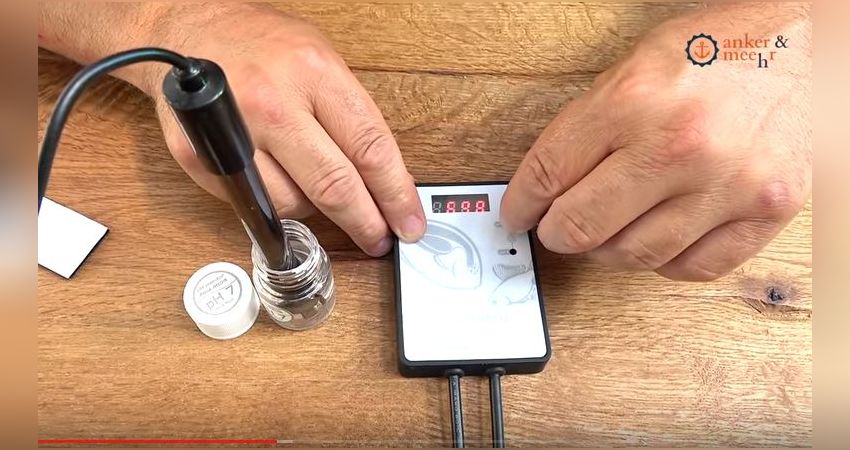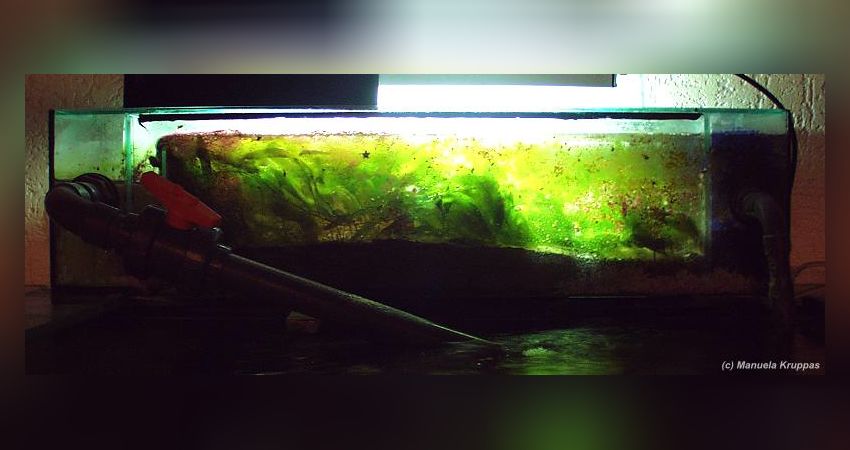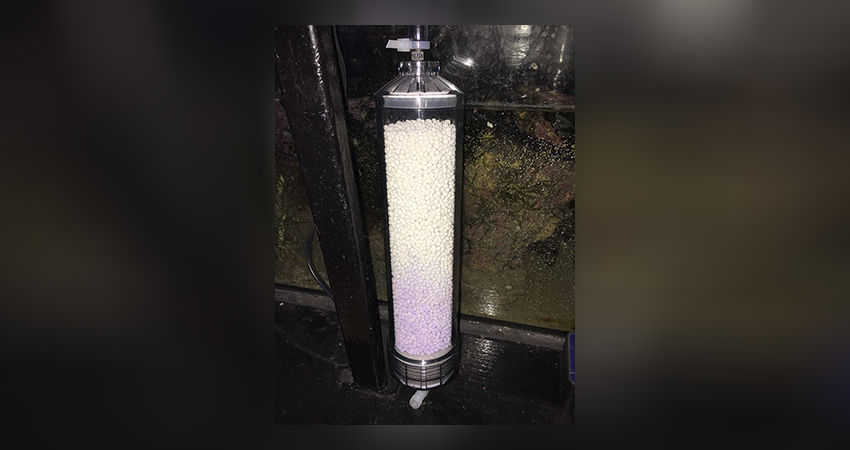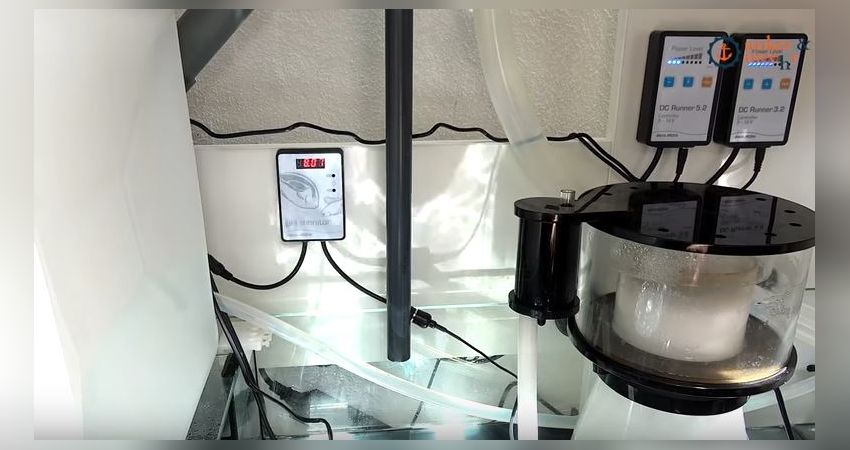How a marine aquarium is created-Part 13: The PH value

PH Monitor Kalibrierung
In natural seawater, the pH is about 8.2 and is not subject to strong fluctuations. In the aquarium, a value between 8.0 and 8.4 should therefore be aimed for. So it makes sense to keep an eye on the pH value regularly, especially because it is now possible to do this cheaply. The PH monitor from Aqua Medic comes in at less than 100 euros. Read more in the article.
One parameter that often goes unnoticed in marine aquariums is the PH value. For most aquarists, this usually ranges between 7.7 and 8.4. During the course of the day, this value fluctuates in the aquarium - it is lowest in the morning and highest in the evening.
I now refer you to the very good article by Steffen Klos which was published by us and in Koralle.
This has to do with the photosynthesis of the corals, which remove CO2 from the water during the day through photosynthesis and release it into the water at night through respiration. The pH value is therefore strongly related to the amount of CO2 in the water. There are studies(1) showing that a PH value higher than the ideal value of 8.3 can greatly accelerate coral growth, which is why it is not entirely clear to me why this value is so often ignored.
There are also other factors that can be taken into account.
There are also other factors that influence the PH value, such as carbonate hardness, but these are not particularly important at typical aquarium values (between 7-8).
A popular way to stabilise the pH value during the course of the day is to operate an algae refugium (or also an algae reactor) in the technical tank, which is lit with a time delay to the lighting of the aquarium, i.e. when the light in the aquarium goes out, the light in the refugium switches on, and the photosynthesis of the algae balances out the PH difference.
.
Now how do you increase the PH value?
However, I would like to present another variant of increasing the PH value, which is completely harmless for the aquarium environment and its inhabitants, and which can be implemented very easily and at low cost in any aquarium system that is operated with a skimmer. It is harmless because you do not actively dose anything into the tank, so you cannot overdose and you do not change any parameters other than the pH value.
.Few aquarists think about the fact that if the CO2 content plays such a large role in the pH value, the ambient air in the tank - especially the air that is constantly pumped into the tank in large quantities by the skimmer - also has a massive influence on the pH value.In a room in which there are many people and possibly also animals who permanently breathe in oxygen and breathe out CO2, it is precisely this air containing a lot of CO2 that is permanently supplied to the aquarium and thus produces a drop in the pH value. The most natural way to keep the CO2 content in the room air low is simply to ventilate regularly with fresh outside air, but unfortunately this is not always possible depending on the outside temperature / season. For this very purpose, you can use a remedy that is familiar to experienced divers, the so-called breathing lime.
.fertige Patrone
This is available in different versions, suitable for our purpose, for example, as small beads in the practical 5L canister.
Whoever wants to read more about it can do so on the following link. (Safely increasing and stabilising PH in a marine aquarium)
.As you can see, the PH value has an enormous influence and importance. Since Aqua Medic launched a fairly inexpensive PH meter for under 100 euros at Interzoo 2018, it has also moved in with us.
[pic:
As you can see, the PH value has a huge influence and importance.
PH Monitor
PH Monitor Kalibrierung
eingebaut im Unterschrank
The PH monitor makes a good impression. Calibrating with the liquids (4 and 7) takes a while but goes well. You can see how the PH monitor is calibrated in the video! It would also have been nice if a holder for the PH probe had been included.
Here you can see the installation in the VIDEO:
How do you like this article?
Info
Author

Bookmark
Comments
Topics
Similar articles
- How a marine aquarium is created Part 32: The aquarium on holiday
- 32 - Hairy stars in the aquarium
- How a marine aquarium is created Part 45: The new Maxspect MJ-GF4k cross-flow pump
- 20 - Activated carbon in the marine aquarium
- How a marine aquarium is created Part 26: Goodbye glass lice?
- Photographing under blue light - 4 clip filters in comparison
- 33 - Butterflyfish in a community aquarium?
- How a marine aquarium is created Part 51: What are the monthly costs?
- How a marine aquarium is created Part 28: When space in the aquarium is at a premium.
- How a marine aquarium is created-Part 13: The PH value
Comments To the top
Das kalibrieren sollte optimalerweise (sonst verwässeren die Flüssigkeiten zu sehr) separat durch Entnahme der zwei Eichflüssigkeiten vorgenommen werden. Mir war das bis dato nicht bekannt, da wir früher den PH Wert nicht elektronisch gemessen haben. Bedienungsanleitung von AM: aqua-medic.de
Please register
In order to be able to write something yourself, you must register in advance.







